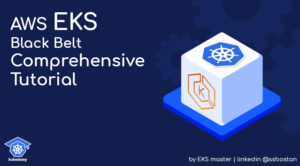
AWS EKS – Part 33 – Bring Your Own CNI (BYOCNI) Approach
BYOCNI stands for “Bring Your Own Container Network Interface”, a feature in EKS that allows the user to install and...

AWS EKS – Part 32 – Setup Cilium CNI on EKS Clusters
Cilium is another trending Kubernetes CNI plugin, a graduated CNCF project. It is known for using eBPF in its core...

AWS EKS – Part 31 – Setup Calico CNI on EKS Clusters
AWS EKS supports almost all CNI plugins other than VPC CNI through two main methods: the chaining mode, “only few...

AWS EKS – Part 30 – Ingress with Application Load Balancer
The AWS Load Balancer Controller(LBC) introduced in the previous lesson also provides a feature to create an AWS Application Load...

AWS EKS – Part 29 – Setup AWS Load Balancer Controller
AWS EKS supports LoadBalancer services to expose your applications outside the clusters. By default, when you create a LoadBalancer Service,...

AWS EKS – Part 28 – Deploy Pods in Different VPC Subnets
VPC CNI supports a feature to deploy Pods in subnets that are different from the cluster and worker nodes subnets....

AWS EKS – Part 27 – Security Groups for Pods Network Security
When using AWS VPC CNI, you can setup another feature to use EC2 Security Groups for Pods, which means you...

AWS EKS – Part 26 – Increase VPC CNI Allocatable IP Addresses
Every AWS EC2 instance comes with a limitation in the number of maximum network interfaces which can be assigned to...

AWS EKS – Part 25 – Kubernetes Networking and AWS VPC CNI
AWS VPC CNI is the default CNI “Container Network Interface” in EKS, and it’s installed automatically when the cluster is...
